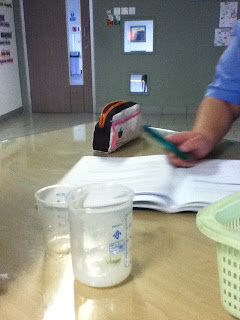
ARTIFICIAL VEGETATIVE REPRODUCTION
In a wide sense, methods of vegetative propagation include
cutting,
vegetative apomixis,
layering,
division,
budding,
grafting and
tissue culture.
Cutting is the most common artificial vegetative propagation method,
where pieces of the "parent" plant are removed and placed in a suitable
environment so that they can grow into a whole new plant, the "clone",
which is genetically identical to the parent. Cutting exploits the
ability of plants to grow
adventitious roots
(i.e. root material that can generate from a location other than the
existing or primary root system, as in from a leaf or cut stem) under
certain conditions.
Vegetative propagation is usually considered a cloning method.
However, there are several cases where vegetatively propagated plants
are not genetically identical. Root cuttings of thornless blackberries
will revert to thorny type because the adventitious shoot develops from a
cell that is genetically thorny. Thornless blackberry is a
chimera, with the epidermal layers genetically thornless but the tissue beneath it genetically thorny.
[citation needed] Similarly, leaf cutting propagation of certain chimeral
variegated plants, such as snake plant (
Sansevieria trifasciata), will produce mainly nonvariegated plants.
[citation needed]
Grafting
is often not a complete cloning method because sexual seedlings are
used as rootstocks. In that case only the top of the plant is clonal. In
some crops, particularly apples, the rootstocks are vegetatively
propagated so the entire graft can be clonal if the scion and rootstock
are both clones.
Apomixis (including apospory and diplospory) is a type of reproduction that does not involve
fertilisation. In flowering plants, unfertilized seeds are involved, or plantlets that grow instead of flowers.
Hawkweed (
Hieracium),
dandelion (
Taraxacum), some
citrus (
Citrus) and
Kentucky blue grass (
Poa pratensis) all use this form of asexual reproduction.
Bulbils are sometimes formed instead of the flowers of
garlic.
These cases would not be vegetative reproduction because normally
reproductive parts were involved. They would be considered asexual
reproduction however. Vegetative reproduction involves only vegetative
structures, i.e. roots, stems or leaves.
In
spore-bearing plants,
apospory is the asexual development of 2n
gametophytes from
sporophytes without undergoing
meiosis or
spore formation
MORE INFO :
http://en.wikipedia.org/wiki/Vegetative_reproduction

















